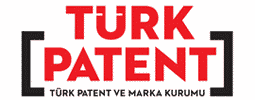The USPTO published a Federal Register notice entitled Setting and Adjusting Patent Fees during Fiscal Year 2020, dated August 2, 2020 (85 FR 46932). This is the FR notice that communicates the USPTO’s conclusion that if we are going to force applicants to change from what they were doing in the past, and in particular if we are going to force them henceforth to hand in some particular format for US patent applications, then we at the USPTO know what’s best, and what’s best is not some particular flavor of PDF. What’s best (according to the USPTO) is Microsoft Word DOCX format.
The Federal Register notice said, in four places:
The USPTO conducted a yearlong study of the feasibility of processing text in PDF documents. The results showed that searchable text data is available in some PDFs, but the order and accuracy of the content could not be preserved.
As soon as we saw this, many members of the practitioner community wondered what was in the “yearlong study”? What was there in this “yearlong study” that led to a conclusion that Microsoft Word DOCX format was supposedly the better format to try to force applicants and practitioners to file, rather than some particular PDF format?
One member of the practitioner community filed a FOIA request at the USPTO, asking for a copy of the “yearlong study”. This was ten months ago. The people at the USPTO whose job it is to fight FOIA requests comply with the FOIA law have fought tooth and nail to keep from having to hand over the “yearlong study” and have not handed it over even now after ten months. And indeed almost everything about the USPTO’s way of forcing the Microsoft DOCX format upon applicants and practitioners has led to an adversarial relationship between the USPTO and a substantial portion of the practitioner community.
So it was very much a breath of fresh air when, earlier today, at my request, Acting Commissioner Andrew Faile sent me a copy of the “yearlong study”. I think Acting Commissioner Faile is trying to be more open and candid with the practitioner community now in recent months.
I have done a quick read of the yearlong study and you can read my initial conclusions here.

